
A whodunit or whodunnit is a complex plot-driven variety of detective fiction in which the puzzle regarding who committed the crime is the main focus. The reader or viewer is provided with the clues to the case, from which the identity of the perpetrator may be deduced before the story provides the revelation itself at its climax. The investigation is usually conducted by an eccentric, amateur, or semi-professional detective.
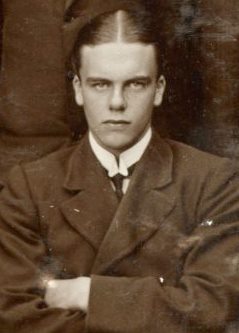
Anthony Berkeley Cox was an English crime writer. He wrote under several pen-names, including Francis Iles, Anthony Berkeley and A. Monmouth Platts.
The Golden Age of Detective Fiction was an era of classic murder mystery novels of similar patterns and styles, predominantly in the 1920s and 1930s.

Kenneth Martin Edwards is a British crime novelist, whose work has won multiple awards in the UK and the United States. As a crime fiction critic and historian, and also in his career as a solicitor, he has written non-fiction books and many articles. He is the current President of the Detection Club and in 2020 was awarded the Crime Writers' Association's Diamond Dagger, the highest honour in British crime writing, in recognition of the "sustained excellence" of his work in the genre.
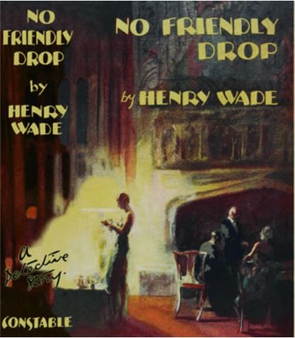
No Friendly Drop is a 1931 mystery detective novel by the British writer Henry Wade. It was the second in a series of seven novels featuring the character of Inspector Poole, published during the Golden Age of Detective Fiction. It was released in the United States the following year by Brewer and Warren where it received positive reviews in the New York Herald Tribune and the New York Evening Post, with the latter describing it as "A superior detective story, depending more upon intrinsic interest in a logical plot than upon excitement and goriness for its hold on the reader".

The Cask is a 1920 detective novel by the Irish-born writer Freeman Wills Crofts. His debut novel, it is considered his masterpiece. Long after the author's reputation had declined, this book was still hailed by critics as a cornerstone of the genre Crofts had been working as a railway engineer before writing the novel, but its success launched him as one of the leading writers of the Golden Age of Detective Fiction. He later went on to create the character of Inspector French of Scotland Yard who appeared in a long-running series of novels.
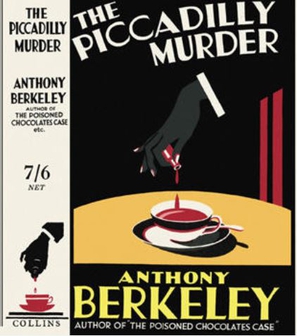
The Piccadilly Murder is a 1929 mystery detective novel by the British writer Anthony Berkeley. Berkley was a prominent writer during the Golden Age of Detective Fiction, known for his private detective Roger Sheringham series and his development of the inverted detective story. Although not part of the Sheringham series it featured the character of Chief Inspector Moresby of Scotland Yard who also appeared several times with Sheringham. Moresby reappeared with the chief protagonist Chitterwick in a sequel Trial and Error in 1937.

Trial and Error is a 1937 mystery detective novel by the British writer Anthony Berkeley. It was a loose sequel to the 1929 novel The Piccadilly Murder, featuring two of the characters from the earlier work the unprepossessing but shrewd Ambrose Chitterwick and Chief Inspector Moresby of Scotland Yard. Berkeley was a prominent author of the Golden Age of Detective Fiction, known for his inverted detective stories.
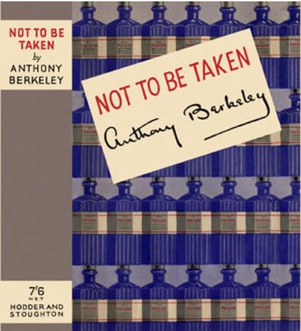
Not to Be Taken is a 1938 mystery detective novel by the British writer Anthony Berkeley. It was one of several stand-alone novels he wrote alongside his series featuring the private detective Roger Sheringham. It was written when the Golden Age of Detective Fiction was at its height. It was published in the United States with the alternative title A Puzzle in Poison.

Colonel Gore’s Second Case is a 1925 detective novel by the Irish writer Lynn Brock. It was the second in his series of seven novels featuring the character of Colonel Wyckham Gore. Gore enjoyed popularity during the early stages of the Golden Age of Detective Fiction. After solving his first case Gore now establishes his own detective agency.

Death in the House is a 1939 detective novel by the British writer Anthony Berkeley. It was one of a number of stand-alone novels he wrote alongside his series featuring the private detective Roger Sheringham. It was his penultimate novel, and his final whodunnit. In later years he continued writing reviews of other crime novels, but no longer wrote his own.

Cicely Disappears is a 1927 mystery novel by the British writer Anthony Cox, written under the pen name of A. Monmouth Platts. Berkley used a variety of pseudonyms during his career, in this case based on two properties he was associated with in Watford. Cox had enjoyed success with novels featuring his private detective Roger Sheringham, at first published anonymously, and also wrote a number of stand-alone novels such as this one.
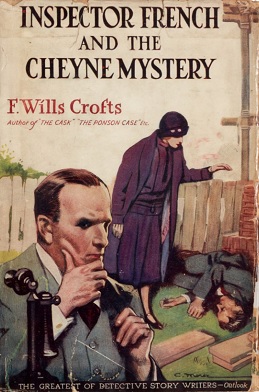
The Cheyne Mystery is a 1926 mystery thriller novel by Freeman Wills Crofts. It is the second in his series of novels featuring Inspector French, a prominent figure of the Golden Age of Detective Fiction. It followed on from his debut in Inspector French's Greatest Case, in which Crofts introduced a character who was more methodical and less flamboyant than many of the other great detectives who followed in the wake of Sherlock Holmes.
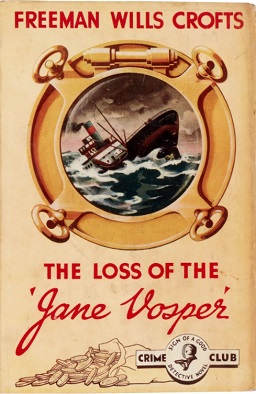
The Loss of the Jane Vosper is a 1936 detective novel by Freeman Wills Crofts. It is the fourteenth in his series of novels featuring Inspector French, a Scotland Yard detective of the Golden Age known for his thorough technique. It particularly dwells on the process of police procedure.
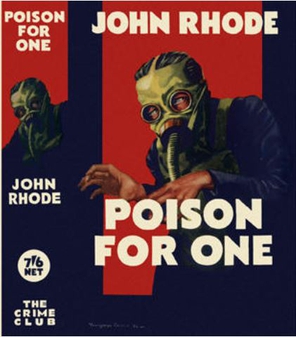
Poison for One is a 1934 detective novel by John Rhode, the pen name of the British writer Cecil Street. It is the eighteenth in his long-running series of novels featuring Lancelot Priestley, a Golden Age armchair detective. It combines elements of the locked room mystery and country house mystery. Reviewing the book in the Sunday Times leading crime writer Dorothy L. Sayers considered it "as usual, sound, pleasantly written, and entertaining" although she complained the book "was rather spoilt for me by the jacket, which deliberately gives away one-half of the solution."

The Two Graphs is a 1950 detective novel by John Rhode, the pen name of the British writer Cecil Street. It is the fiftieth in his long-running series of novels featuring Lancelot Priestley, a Golden Age armchair detective. It was published in America by Dodd Mead under the alternative title Double Identities. Writing in The Observer Maurice Richardson noted a "slight slackening of tension towards the finish but an excellent specimen of Rhode’s later period."
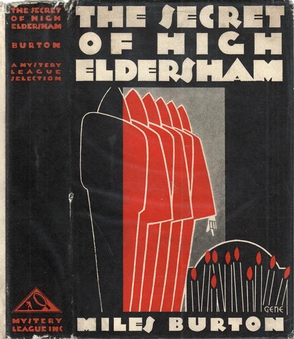
The Secret of High Eldersham is a 1930 detective novel by Miles Burton, the pen name of the British writer Cecil Street. It was the first novel in a lengthy series featuring the detective Desmond Merrion. Street was one of the most prolific authors of the Golden Age of Detective Fiction and had already enjoyed success with his Doctor Priestley series, written under the name of John Rhode. In 1931 it was published in the United States by the Mystery League under the altered title The Mystery of High Eldersham. Originally published in Britain by the Collins Crime Club, it was reissued in 2016 by British Library Publishing as part of a series of crime novels the Golden Age.

Dr. Priestley's Quest is a 1926 detective novel by John Rhode, the pen name of the British writer Cecil Street. It was the second appearance of the armchair detective Lancelot Priestley, who featured in a long-running series of novels during the Golden Age of Detective Fiction. It has been described as the first major detective novel by the author. In its relationship between Priestley and his secretary and future son-in-law Harold Merefield is shown the influence of Conan Doyle's Sherlock Holmes and Watson. Similarly, Inspector Hanslet of Scotland Yard fulfils a similar role to that of Lestrade.

Anything to Declare? is a 1957 detective novel by Freeman Wills Crofts. It is the twenty ninth and final entry in his series of novels featuring Inspector French, a prominent figure of the Golden Age of Detective Fiction. The author had been in poor health for much of the decade, and struggled to finish this book which was published a few weeks before his death.
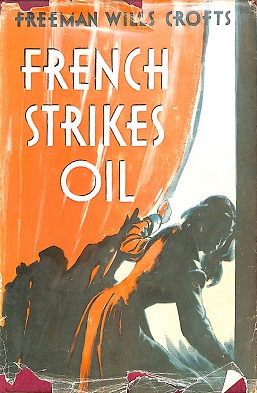
French Strikes Oil is a 1951 detective novel by the Irish-born writer Freeman Wills Crofts. It is the twenty eighth and penultimate entry in his series of novels featuring Inspector French, a Scotland Yard detective of the Golden Age known for his methodical technique. It was published in the United States by Dodd Mead under the alternative title of Dark Journey.



















